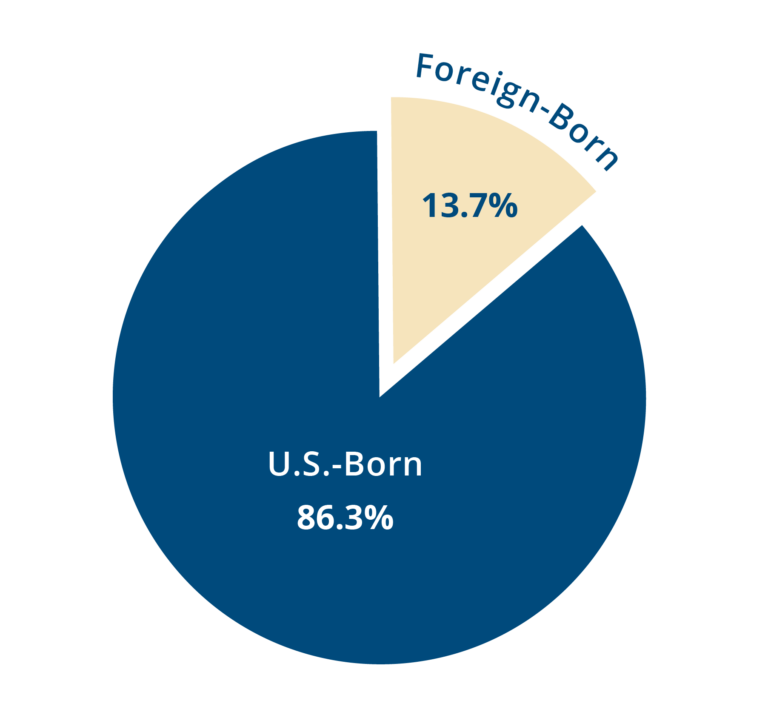As the United States navigates various socio-economic challenges and opportunities, the ongoing immigration debate remains a critical topic. In 2023, immigration to the U.S. continued to shape the nation’s demographic and economic landscape. Understanding how many immigrants arrived this year provides insight into the broader implications of immigration policies and their effects on American society.
How many immigrants came to the U.S. in 2023?
In 2023, approximately 1.4 million immigrants settled in the United States, marking a significant increase from the previous years, reflecting a combination of humanitarian resettlement efforts, family reunifications, and employment-based immigration pathways.
An Overview of Immigration Trends
The immigration landscape in the U.S. has shifted over recent years due to various factors, including policy changes, global conflicts, and economic conditions. The Biden administration has implemented changes to previous immigration policies, increasing refugee admissions and providing greater pathways for legal residency. This shift has contributed to the rise in the number of immigrants.
Demographic Breakdown of Immigrants
According to the latest data from the Department of Homeland Security (DHS) and the U.S. Census Bureau, immigrants coming to the U.S. in 2023 can be categorized into several key demographic groups:
| Category | Number of Immigrants | Percentage of Total Immigrants |
|---|---|---|
| Family Reunification | 600,000 | 43% |
| Employment-Based | 400,000 | 29% |
| Refugees and Asylum Seekers | 300,000 | 21% |
| Other (Diversity Visas, etc.) | 100,000 | 7% |
| Total | 1,400,000 | 100% |
Key Contributors to Increased Immigration
The rise in immigration numbers in 2023 can be attributed to several interrelated factors:
- Humanitarian Crises: Ongoing conflicts in regions such as Afghanistan, Ukraine, and Venezuela have resulted in increased numbers of refugees seeking asylum in the U.S.
- Policy Revisions: The Biden administration has made significant adjustments to immigration policies, increasing the cap on refugee admissions and reinstating programs that facilitate family reunifications.
- Economic Opportunities: The U.S. labor market has shown signs of recovery, attracting immigrants who seek employment opportunities, especially in sectors facing labor shortages like healthcare and agriculture.
- Community Support: Established immigrant communities continue to provide networks and resources for newcomers, easing the transition and integration process.
Economic Impact of Immigrants
Immigrants play a vital role in the U.S. economy, contributing to growth and innovation. In various sectors, they fill essential jobs, pay taxes, and stimulate demand for goods and services. According to a report by the National Bureau of Economic Research (NBER), immigrants contribute approximately $2 trillion to the U.S. economy annually.
Employment and Industry Contributions
The contributions of immigrants vary across different industries. Below is a breakdown of immigrant participation in key sectors:
| Industry | Immigrant Workforce Percentage | Number of Immigrants Employed |
|---|---|---|
| Healthcare | 25% | 1,200,000 |
| Agriculture | 31% | 500,000 |
| Technology | 19% | 600,000 |
| Services (Hospitality, etc.) | 20% | 800,000 |
| Total | – | 3,100,000 |
The healthcare sector, in particular, has seen a surge in immigrant participation, helping to meet the demands brought forth by an aging population and a growing need for healthcare services.
Challenges Faced by New Immigrants
Despite the opportunities, many immigrants face significant challenges upon arriving in the U.S. Language barriers, cultural adjustments, and access to resources such as housing and education can impede their integration into society.
Support Systems and Resources
Several organizations and government programs exist to assist immigrants in their transition. These include:
- Non-Profit Organizations: Groups such as the International Rescue Committee (IRC) and Catholic Charities offer support in areas ranging from job placement to language classes.
- Government Programs: The U.S. Citizenship and Immigration Services (USCIS) provides resources for immigrants seeking legal residency.
- Community Initiatives: Local governments and community organizations often run programs that focus on immigrant integration, providing access to services and fostering community connections.
Future Projections
Looking ahead, immigration trends are likely to continue evolving. As global conflicts persist and climate change contributes to displacement, the U.S. may see sustained pressure to accept more immigrants. Furthermore, ongoing legislative discussions surrounding immigration reform could significantly influence numbers and policies.
Conclusion
The immigration landscape in 2023 illustrates the complex interplay between humanitarian needs, economic opportunities, and policy frameworks. With approximately 1.4 million immigrants arriving in the U.S., their contributions resonate across various sectors, playing a pivotal role in shaping the nation’s future. Understanding these trends not only highlights the importance of immigration in American life but also underscores the need for supportive policies and community efforts to facilitate successful integration.
